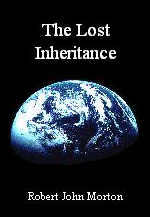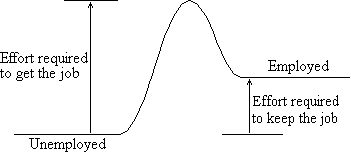
Ch06: Footnotes
Critical Mass
DSS Savings Limit
Market Exclusion
Cost of Marketing
Acquisition
Social Isolation
Blaming Society
Nebulous Money
Social Isolation
Free Competition
It is a confluence of juxtaposed forces. It is the natural latch that holds together the universe and all its parts. In an economy it is the force that favours the status quo. It is the latch on the door to the free market that makes sure that any whom misfortune may cast out, become locked out.
From the realm of sub-atomic particles to the galactic structures of the cosmos, nature is replete with examples of a natural phenomenon known as the energy barrier. It may be thought of as the amount of effort a system is prepared to expend in resisting any outside influence which is trying to split it apart, to join it to something else, change its internal structure, or alter its current mode of operation.
An example is chemical bonding. It takes a lot of energy to split water into hydrogen and oxygen. It also takes energy to make them combine to form water again. Either way, they resist the change. The latter requires far less energy than the former. In the latter case, once the small amount of energy has been put into the system to raise its temperature to the flash point, all the rest of the energy put in by the former operation is released spontaneously in a violent thermal explosion.
It is as if when the gasses are mixed but cold, they are sitting in a little energy hollow near a cliff edge. If something can just raise the energy of the system enough to get it over the threshold, it will fall over the cliff. It will then fall down to a far lower energy state, releasing all its stored energy on the way. The system has two stable states: a high-energy state and a low energy state. The low energy state (water) is very stable. The high energy state (a cold mixture of hydrogen and oxygen) is also stable.
However, a small outside perturbation will tip this higher state into releasing its stored energy. This state is therefore referred to as a metastable state. It is held in place by a small energy threshold, which acts like a kind of latch or ratchet.
This same principle operates within a market. It is hard to sell. Much effort is required to advertise, get appointments with customers, go and see them, persuade them to buy and then, most of all, to get the money out of them. On the other hand it is very easy to buy. Just mention that you are 'in the market' for something and salesmen will suddenly be all over you. Yes sir! No sir! Three bags full sir! You have to climb an 'energy wall' to change goods into money. You only have to tip yourself over an 'energy threshold' to change money into goods.
The energy threshold is the difference between the effort required to service and hold a customer, and the effort that was required to win that customer in the first place. The principle is also scaleable. It affects the multinational, the corporate and the self-employed artisan. However, the height of this threshold is determined far more by the size of the market than by the size of the business supplying it. Multinationals therefore have the advantage. They have the most resources with which to climb the energy wall.
This principle also operates in the job market. It takes far more effort to get a job than to keep one.

Other forces work against the job holder's efforts to keep his job. They are the market forces of supply and demand. To overcome them, the job seeker must be competitive. However, in times of recession, these forces increase sufficiently to tip the job holder over the threshold back into unemployment. By now he is older. Once unemployed for any length of time, the height of the energy wall increases dramatically. Now, as a job seeker, he has to overcome not only the forces of competition, but also the forces of prejudice. He can always, by effort, increase his competence. However, no amount of effort on his part alone can overcome market prejudice. From now on, the barriers to re-employment will, for him, only get higher.
Corporates overcome market resistance by the proactive marketing and selling, both of themselves and their products. But this is a very expensive business. They have to hire the services of advertising agencies and public relations firms. For this they set aside a very significant proportion of their gross profits. The unemployed, on the other hand, do not have the means to do this. State welfare provides them with barely enough to stay alive. It certainly leaves nothing to spare for financing a self-promotion exercise of sufficient strength to compete against already employed job hoppers, and overcome the inherent prejudice engendered by their unemployed status.
From where I stand, as an unemployed person on State welfare, this is indeed a formidable barrier whose great resistive strength stems from two compounding facts. These are basically that: